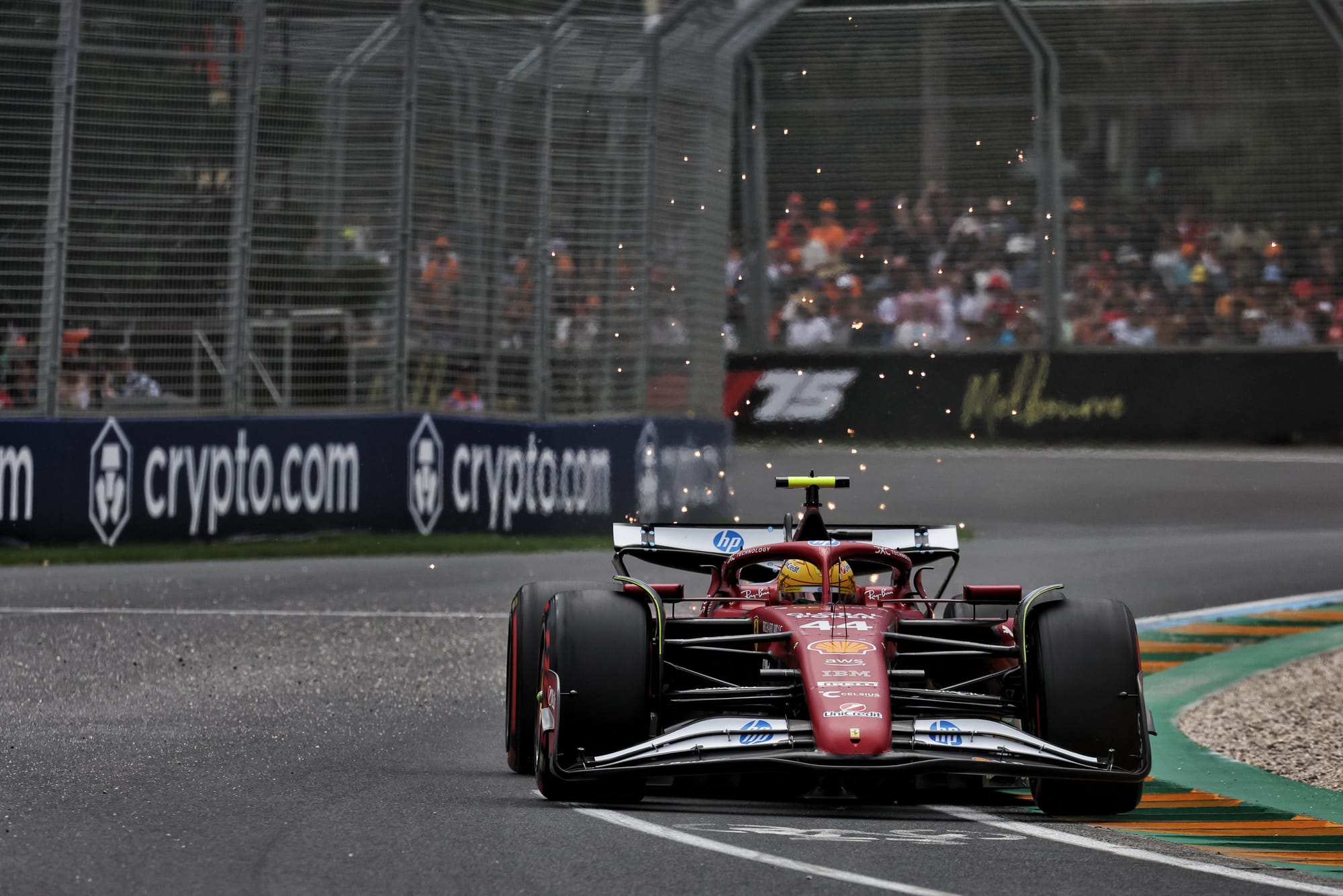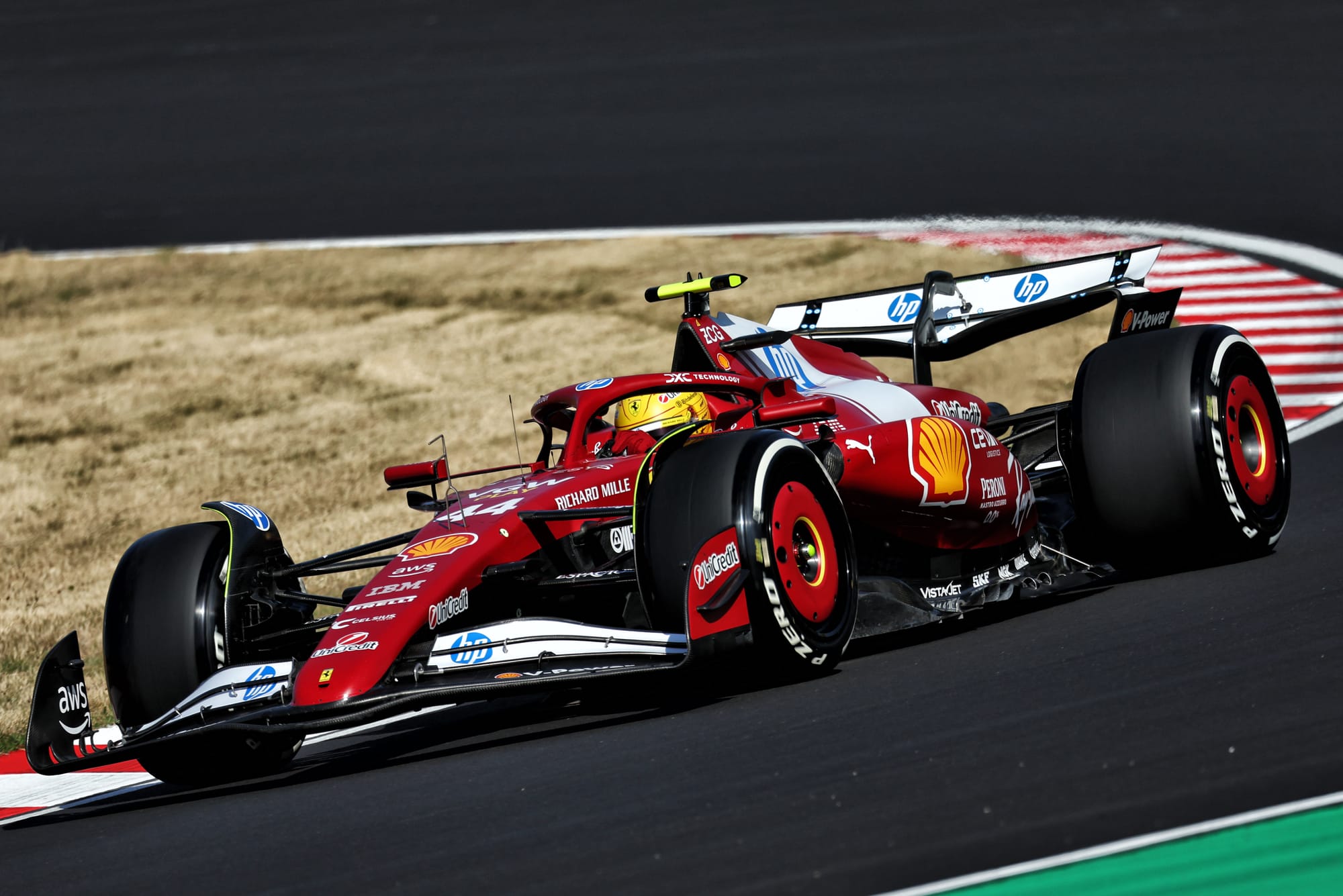Up Next

The most worrying thing about Lewis Hamilton's Ferrari struggles isn't how far off team-mate Charles Leclerc he has been for the last three Formula 1 races, but how he seemingly believes this is going to be typical for the rest of the season.
Because it really is not a sustainable state of affairs.
Asked after finishing half a minute behind his team-mate in the Saudi Arabian Grand Prix - last of the finishers from the top four teams - where his sprint-winning form of China had gone, Hamilton replied: "I don't have an answer for you. There's nothing.
"Balance, struggling to feel the car beneath me, but there's no particular thing.
"It's just, there's nothing to say, 'Hey, this is the issue'.
"At the moment, there's no fix. This is how it's going to be for the rest of the year. It's just going to be painful."
It's been this way ever since Ferrari was obliged to drastically change the set-up parameters of the car after China as a result of Hamilton's disqualification there for excessive underbody plank wear.
The way the car now has to be configured to prevent a repetition of that has resulted in what Leclerc describes as 'a really extreme' set-up just to extract the most from its limited potential.
Essentially, the mechanical balance he's chosen is working against the aerodynamic balance, getting around the car's fundamental imbalance so as to give a better spread of performance through different speed ranges.
That post-China version of the car has made it a much more challenging drive and taken it further away from what Hamilton needs to be quick.

In Melbourne, where he qualified one place behind Leclerc, his 0.218s deficit was mainly accounted for by one corner - Turn 12 - which Hamilton was having difficulty hooking up.
Over the rest of the lap there was very little difference between them. They had appeared quite evenly matched in pre-season testing in Bahrain, too.
At Shanghai for round two, Hamilton was ahead of Leclerc, both in the sprint (which he won from pole) and in qualifying for the grand prix itself. He outqualified Leclerc by 0.208s for the sprint and by 0.094s for the grand prix, but in the race was clearly slower than Leclerc despite Leclerc's front wing carrying endplate damage for almost the entire race.
Since the car was reconfigured for Suzuka, following Hamilton's disqualification in China, the results in qualifying have been disastrous for Hamilton: 0.311s off Leclerc around the Japanese track, 0.597s off in Bahrain, 0.432s in Jeddah.
There are updates coming, possibly for Imola, designed to address the problems - but probably just as workarounds for a more fundamental issue to do with the basic architecture of the rear suspension and gearbox.
It's interesting to ponder whether it will be feasible to revert to the China set-up for the forthcoming Miami sprint race, as the typical sprint fuel level of around 35kg (compared to over 100kg for a grand prix) and the shorter time on track obviously do not pose as much problem with plank wear.
But the underlying problem is still very much there and if we take Hamilton at his word, it may well remain there.

Which will be especially problematic for Hamilton. He is more than aware of how his underperformance is generating mounting pressure from Ferrari management onto the team, from within the team itself and from F1 towards the team.
A driver with the enormous profile of Hamilton, a team with the immense profile of Ferrari amplifies that pressure tenfold, perhaps more than it would in any other driver/team combination.
Hamilton's recruitment to the team was very much the pet project of Ferrari's ultimate boss John Elkann.
He has bigger responsibilities within the gigantic Stellantis automotive group than worrying about how Hamilton handles entry oversteer combined with mid-corner understeer. But we can be certain his dissatisfaction with current levels of performance (both the team's in its shortfall to the front and Hamilton's in his shortfall to Leclerc) will be transmitted to the team itself, down through team principal Frederic Vasseur and from there to the rest of the team.
The longer the situation prevails, the bigger that pressure becomes.

Likewise, Formula 1's business model is almost configured to feature a competitive Ferrari and for its biggest-profile star Hamilton to be in a competitive car.
Liberty and Stefano Domenicali will not be unconcerned with the way Hamilton is underperforming in the way they would be over anyone else.
Back when Daniel Ricciardo was qualifying an average of 0.3s off Lando Norris (who had yet to win a grand prix at that stage) at McLaren in 2022, it was not deemed to be sustainable - and ultimately he could not continue there despite having a contract to do so.
Ricciardo at that time seemed to be just as much at a loss to understand his shortfall as Hamilton currently is. But the pressures are rather different.
A competitive run in the sprint race in Miami might give Hamilton some breathing space. But the solutions - from the team and from Hamilton himself - desperately need to be coming sooner than what Hamilton seems to be envisaging.



